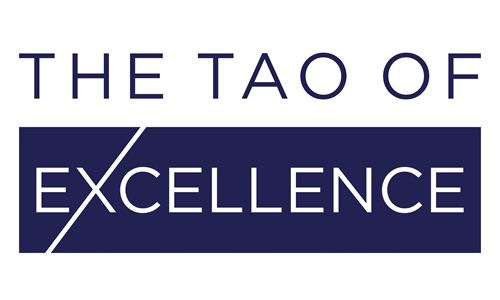The clock is ticking, and time is running out to prepare your organisations’ Medical Device Regulations (MDR) certification. With just 16 months to go till the MDR is applicable (26th May 2020), we have outlined the 6 key steps to securing the future of your business and its supply chain in the European market.
- Review your product portfolio
The first step is to review your portfolio of products. Identify which products may be affected by checking their current Medical Device Directive (MDD) certificate. If valid, these may be used for 4 years following the MDR application (up to the 25th May 2024). Based on this analysis, MDR certificates can be scheduled and timed in relation to the product and availability of the Notified Body (NB). If products are likely to be affected by any design changes—or fall under a revised class of medical device classification (for example, a change from Class 2 to Class 3 under the MDR)—those products will need to be prioritized first.
- Plan with your Notified Body
NBs can only certify for the MDR if they are designated for it. BSI UK is the first designated NB to be approved—with more organizations to follow shortly. Companies must reach out to their respective NBs to gain a clear picture of the timeline to its MDR designation. We also recommend that companies contact more than one NB. This will help mitigate against the risk of working with an NB that does not receive its MDR status for all scopes or drops out completely.
The next step to ensure a smooth transition to the MDR certification is to have a complete and detailed timeline of your audit signed off with an approved NB. This will ensure that you are not caught in the last-minute rush to designated NBs, which is going to result in delays to audit scheduling and technical documentation reviews, higher prices, and potentially the loss of certification.
According to a Team NB survey (the European association of medical device NBs), 20 of its 24 members—which represents the most familiar names that control the majority of auditing and certification market—are seeking MDR accreditation. However, smaller NBs—around 20% of the market, which tend to serve local medical device companies and are usually European-based clients, are expected to have a high dropout rate that will leave many companies searching for a new NB.
- Upgrade your Quality Management System
The best way to upgrade the Quality Management System (QMS) to meet the MDR requirements is to perform a gap analysis. In an upcoming article, we will publish a strong methodology to guide you through a gap analysis.
A gap analysis relies on a cross-functional team that includes expertise from across the organisation. Concentrate your analysis on procedures that require the MDR. This is an excellent opportunity to review and strengthen any documentation related to the management system or your training processes. Hire or assign someone who will be responsible for Regulatory Compliance and define those regulatory responsibilities and processes. Train all your relevant personnel in the MDR process, including the reasons for its implementation and its impact on business. Clarity and proper training will mean that your team will proactively adjust to the new policies and procedures in the manufacturing and supply chain. A good understanding of the MDR and its actions will also be a significant strength during the audit process.
- Review technical documentation
Technical documentation as per the MDR follows the plan–do–check–act (PDCA) approach. The inclusion of the post-market surveillance (PMS) report and the periodic safety update report (PSUR) in the technical documentation on PMS—based on corrective or preventive actions—makes this a living document that will be continually edited and updated. Organizations should also check that the PDCA loop is closed by putting in place systems that periodically review and update technical documentation.
For the timely arrival of the unique device identification UDI under the MDR, manufacturers must reach out with the revised product portfolio to the designated UDI issuing organisations (GS1, HIBCC, ICCBBA). Even though the functional specifications of the European Databank on Medical Devices (Eudamed) are yet to be released, organisations are advised to request a timeline from their Competent Authorities (CA) to find out when they will receive their single registration numbers (SRN) to access Eudamed.
- Strategize a cost-benefit analysis
A cost-benefit analysis is one of the key decision-making factors in the MDR certification journey. The MDR will become applicable on the 26th May 2020 and any pre-existing and valid MDD certificates may be used until the 25th May 2024. After that, only MDR certified products will be authorised for sale in the EU.
Cost will be a factor in the implementation of the MDR certification as will any additional changes, such as upgrading the risk class of a medical device and the conformity assessment procedures depending on that classification. Merging the technical documentation gaps, PMS and UDI, the IT support for Eudamed, upgrading the QMS and the necessary training will all incur costs. To create the right strategy for your organization, a holistic approach to your product portfolio, design changes and the supply chain will assist your company in ensuring a smooth transition to MDR certification.
- Communicating with distributors, importers and authorized representatives
MDR certification is applicable to both manufacturers and the entire supply chain. Each sector has a list of roles and responsibilities that is clearly defined by the MDR documentation. The manufacturer should review agreements with distributors, importers and authorized representatives to ensure that the regulation requirements—and the needs of the manufacturer in terms of data collection for safety and performance purposes—are being adequately met.
CA reserve the right to audit any supply chain partners when assessing the implementation of the MDR. Manufacturers will therefore need to include more of the supply chain in the QMS, and clearly communicate requirements to their supply chain representatives to confirm that it is staffed and adequately trained to meet the demands of an MDR audit.
Begin now and secure the future of your business in Europe
Peter Drucker, the father of modern management, said “what gets measured gets managed.” Begin now and take the first step to MDR certification by:
- performing a gap analysis to identify where your business is and where it needs to be;
- do this with a committed cross-functional team that has strong support from top management;
- and contact NBs immediately about their MDR status and submission and audit plan for your portfolio as soon as possible.
The MDR is a rapidly evolving scenario that is in depth and very complex by nature. Everyone can see the bigger picture of a safer and more efficient industry but correctly placing the pieces that make up that picture will require expert planning and clear processes.
Bringing in professionals to guide your organization through the MDR certification could be an invaluable start. The Tao of Excellence has the right industry specialists and expertise to see you successfully through this process and can implement certified training and fresh strategies to improve your business for not only today, but also the future.
Phone
+41 52 685 51 65
Email
[email protected]
Did you like this article? Follow us on LinkedIn and Twitter!


